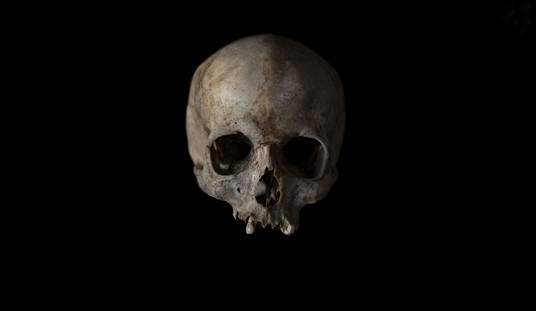If you want to put the brakes on the public’s willingness to tear down Confederate monuments there’s no faster way than this, expanding the scope of “problematic” figures from secessionists who fought against the United States to the Founding Fathers who created it. If Robert E. Lee and George farking Washington are a package deal, guess how most Americans are going to feel about the package. I’m sympathetic to moving CSA memorials from public squares to historical battlefields and museums but that sympathy ends as the idol-smashing impulse expands to genuine American heroes. An accommodation will have to be reached. It’s especially stupid for liberals to try to expunge a hero of Washington’s stature with the alt-right in the public spotlight and eager to sell whites on a package of their own, that pride in America is inextricable from white identity. Tell people who admire George Washington despite his slaveholding that they’re racists for doing so and they’ll decide, “Okay. Racism it is.”
For what it’s worth, this sort of thing helps Trump out too. The core of the president’s defense of the alt-right yesterday was that someone has to stand up to the leftist impulse to erase American history. That argument can be countered in Lee’s case by noting that Lee was, after all, on the losing side of a war fought by a pro-slave regime against the United States and owes his entire historical legacy to that fact. For someone with a much broader historical legacy than slavery, like Washington, it’s far harder to counter.
On the phone to Bannon, Trump asked his chief strategist “where does it end?” according to a source with knowledge of their conversations.
Trump wasn’t referring to the white supremacists, but to the counter-protesters whom the president believes are on a slippery slope towards “changing history” by tearing down monuments of Confederate heroes and potentially, he has said, the Founding Fathers like George Washington, who owned slaves…
Both Trump and Bannon are of one mind, and, within the White House at least, theirs is a minority view. They saw the backlash to Charlottesville as an example of political correctness run amok and instinctively searched for “their” people in that group of protesters. Bannon has told associates that Trump, on Tuesday afternoon, took it to the next level for the country by asking where does it end? He especially loved Trump’s line: “I wonder, is it George Washington next week?“
And here we are already. For the moment, though, this is just one guy in Chicago. Let’s see a poll before we conclude that the monument-melters are coming for Washington. In the meantime, writes Ramesh Ponnuru, go ahead and start uprooting those Confederate memorials:
Our national mythos has come to celebrate Thomas Jefferson less than it once did: His reputation has suffered, as it should have, as we have reckoned with slavery. We remember Jefferson the slave master; but we also remember the Declaration of Independence, the University of Virginia, a role in our national history that is not reducible to his slaveholding. Jefferson Davis, on the other hand, to this day has a highway with his name on it in Virginia because, and only because, he tried to found a nation with slavery as its cornerstone…
Those who defend Lee statues and worse often say they are motivated by “heritage not hate.” There is no reason to doubt them. But the meaning of a public symbol is not a private possession. They may tell themselves that the statue should stay to honor Lee’s (allegedly) conciliatory behavior after the war. Can they really tell black people who interpret it differently — who look at that statue, erected in the same period as “The Birth of a Nation” and the second Ku Klux Klan, and see a public display of contempt for their dignity and rights — that their reaction is absurd? The marching racists were vile and stupid. But they weren’t crazy to treat the statue as a vestige of white supremacy.
No, they weren’t, especially when you remember the timeline of when these monuments were erected. The vast, vast majority of them weren’t put up immediately after the Civil War by Confederate veterans and families mourning their dead friends and relatives. They began going up in earnest at the start of the 20th century, around the time the NAACP was formed and the Ku Klux Klan made a comeback, and continued in fits and starts thereafter with another burst during the height of the civil-rights movement in the 1960s. Treating them as de facto monuments to the ideal of white supremacy isn’t some left-wing talking point. Given the chronology, it’s an unavoidable conclusion about their meaning. As blacks started moving towards demanding equal rights, whites started commemorating the slave-era south as an expression of defiance and dominance. Statues of Lee carry that legacy. Statues of Washington don’t.







Join the conversation as a VIP Member